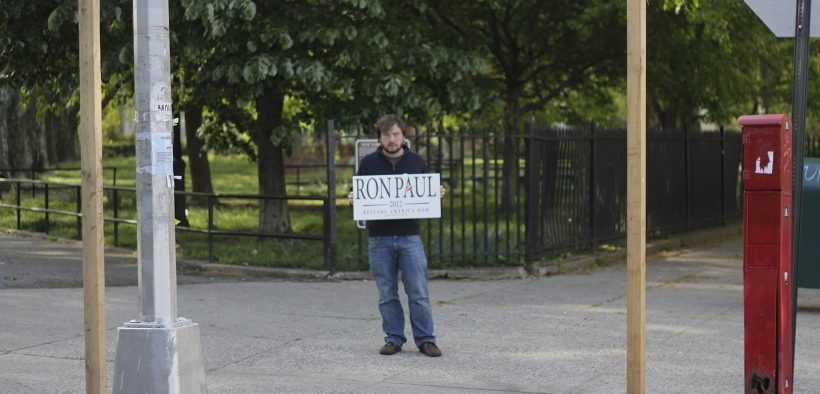Two-Party System Faces Challenge in NYC Ranked Choice Voting Ballot

Could ranked choice voting finally be mounting a real challenge to the U.S.’ longstanding, but much-maligned, two-party political system?
New York City is poised to join a number of other states and municipalities across the U.S. that have switched to Ranked Choice Voting (RCV). The ballot measure, Question 1, will appear on New York City voter’s ballots this Tuesday, November 5 and would implement RCV for primaries and special elections in NYC starting in 2021. Passing ranked choice voting in such a large population as New York City could help RCV advocates quell arguments that RCV is too complicated and help usher in a new era of RCV implementation across the country.
What is Ranked Choice Voting?
Under the current plurality voting system used in most U.S. elections, voters pick one candidate who they want to win. RCV differs in that voters can rank a number of candidates in their order of preference. The system being proposed in NYC would allow voters to rank five candidates on their ballot for each elected office being voted on.
Using plurality voting, the winner is the candidate with the most votes. Using RCV, calculating a winner can be a little more complicated. If one candidate gets more than 50% of the first-choice votes they win, but if no candidate has a majority of number one rankings then the second and third place rankings are factored in.
Fairvote, a national nonprofit that advocates for RCV describes the vote count process as follows:
“For a single office, like for a mayor or governor, RCV helps to elect a candidate more reflective of a majority of voters in a single election even when several viable candidates are in the race. It does this by counting the votes in rounds:
“Voters get to rank candidates in order of choice. If a candidate receives more than half of the first choices, they win, just like any other election. If not, the candidate with the fewest votes is eliminated, and voters who picked that candidate as ‘number 1’ will have their votes count for their next choice. This process continues until a candidate wins with more than half of the votes.”
Pros and Cons of Ranked Choice Voting
Critics argue ranked choice voting is more complicated than plurality voting. For those running the election, the process of calculating a winner often involves more steps and is not as straightforward as a simple majority wins. Voters have to make decisions about multiple candidates in relation to each other, rather than just picking a favorite, and also to some degree are expected to understand the process of how their votes will be counted.
Proponents of ranked choice voting argue ranking choices by preference is something humans do every day and declaring it too complicated is belittling. They also point to the success of its implementation in numerous cities and municipalities across the country. Most notably, Maine adopted RCV for all state and federal primary elections beginning in 2018. Eighteen cities across the country also use RCV for various local elections, with more cities already in the process of adopting RCV. Five states also use RCV in Democratic presidential primaries.
RCV has been shown to have positive impacts on campaigns and elections. One of the biggest upsides of RCV is that it eliminates vote splitting, also known as the spoiler effect. In plurality voting elections two, or more, candidates who have similar platforms will be vying for the votes of the same base and can end up splitting those votes between them while an opposition candidate could have a smaller overall base but end up with a greater percentage of the vote because they didn’t split it with anyone. In an election between green and blue if there are three green candidates: Lime Green, Sage, and Dark Green, and they each get 20% of the vote, while the Royal Blue candidate gets 40%, blue will win even though the majority of the electorate favored some kind of green.
This is a problem not only because it skews election results but also because it discourages people from running. Potential candidates may not want to enter a race for fear of spoiling the election for someone else they share some policy goals with. By eliminating the possibility of vote splitting RCV can help empower anyone who is not backed by one of the two major political parties to run and get some political attention for their platform even if they don’t have a high chance of winning.
One study by FairVote showed that RCV makes campaigns more civil. The logic is that candidates are not just campaigning to be number one, they also want to be ranked as highly as possible by those who don’t rank them number one. Calling one of your opponents nasty names, or disparaging the intelligence of the people who vote for them is not a good tactic if you want to be the second choice for those supporters.
Another study by FairVote showed that significantly more people of color and women have been elected to office since the adoption of ranked choice voting in the Bay Area.
Why the NYC Ballot is Historic
Traditionally support and opposition to ranked choice voting have broken along party lines with Republicans against it and Democrats in favor. Vote splitting has been a problem for Democrats at various levels for years and because RCV mitigates that effect it can lead to more favorable outcomes for Democrats in certain areas.
However, in the lead up to the New York City ballot measure vote, there has been a diverse coalition of supporters from across the political spectrum and no significant organized opposition. New York City is a politically unique environment so it remains to be seen if this bipartisan support of RCV is just an NYC thing, or something else. If this is an early indicator that Republican opposition to RCV is weakening and that conservatives may even support the new system then RCV could start spreading rapidly.










A look into world history shows that “the people’s choice’ has never been a formula for long-term success. There are zero long-term successes of polities in all of world history. There’s a lesson there, but, like so many truths, it is too much for people to acknowledge. Life is a daily pretense of immortality, and empires are a daily pretense of invincibility.